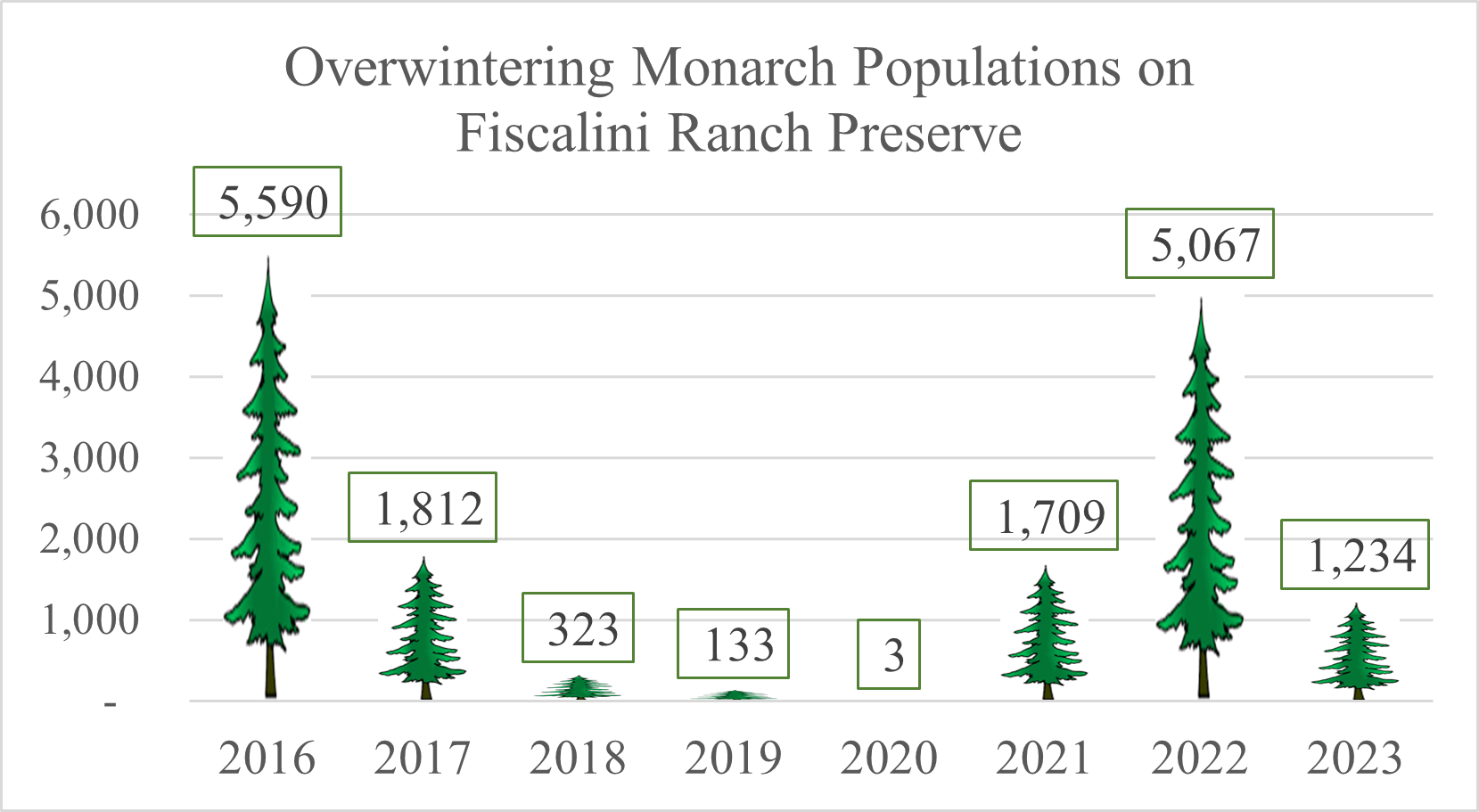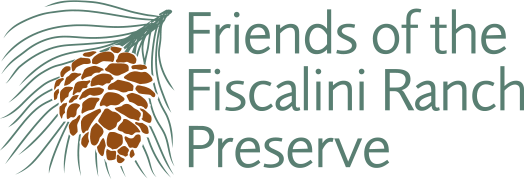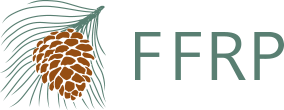2024.02.14 | Not Only People Enjoy a Winter Getaway

One enchanting aspect of living in coastal California is sharing our forests with monarchs. Their annual arrival marks the change of the season, and we eagerly wait to see how many will delight us each year. Although this year’s Xerces Society Thanksgiving weekend count was lower than last year, possibly due to winter storms, each butterfly is still a delight as it flits by.
In late summer, monarchs fly hundreds of miles from all over the western states and Canadian provinces to the California coast. This butterfly cohort lives up to nine months instead of mere weeks while they pass the winter in sheltering forests. Once the warmth of spring breaks milkweeds’ dormancy inland, these winter visitors will head inland to lay eggs for the first generation to undertake the annual migration again. Subsequent generations, living three to six weeks, will follow spring and milkweed north until the fourth or fifth generation heads back to California, a place they have never been but instinctively find.
Fiscalini Ranch Preserve is one of the few native forests on California’s coast to host overwintering monarchs. Most people might assume that monarchs prefer eucalyptus. Eucalyptus was introduced to California around the 1850s and it replaced native trees in most overwintering locations. Monarchs adapted to these new trees, but they evolved to shelter on Monterey pine (Pinus radiata).
Another misconception is that monarchs need constant access to milkweed. Overwintering monarchs do not need milkweed. In fact, they react so strongly to milkweed that having it around disrupts their natural migration cycle and they begin to breed instead. Experts recommend not planting milkweed within five miles of overwintering sites to reduce this additional stress on their survival.
Monarchs do need nectar plants for food and water to get them through the winter months. They rely on common winter-blooming natives like coyote bush (Baccharis pilularis), yarrow (Achillea millifolium), seaside daisy (Erigeron glaucus), coast buckwheat (Erigonum latifolium), seacliff buckwheat (Erigonum parvifolium), toyon (Hetermeles arbutifolia), fuchsia-flowered gooseberry (Ribes speciosum), and pink chaparral currant (Ribes malvaceum).
Friends of the Fiscalini Ranch Preserve works with the Cambria Community Services District to protect and enhance monarchs’ overwintering habitat on the Ranch. FFRP will plant out native nectar plants, grown for us by Santa Barbara Botanic Garden, in fall 2025. With mindful care, Cambria’s monarch population will thrive.

Article first published in https://cambriaca.org/


